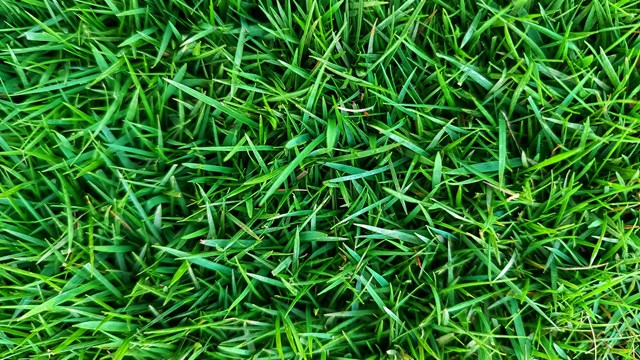
Condos and HOA communities can be a great setting to own a home, enjoy privacy and the comforts of your own personal space. But, there will always be tension between the desire to make your unit your own, and adhering to the rules of the community for the greater good, which is usually peaceful coexistence and healthy property values.
One of the great examples of this conflict is outside space. Balconies, lawns, terraces, and backyards—these are the places where people are still in their homes, and also in a common area because they can all be seen by neighbors. Gardens, pools, and decorations—they reflect the appearance of the entire community but they are an owner's private property as well. Unit owners, property managers and their attorneys need to navigate rules and stipulations that affect these areas with special care because of that inherent conflict of interest.
Limited Common Elements
To some people, a lawn or balcony might sound pretty uncontroversial. But, then again, everyone's seen how some people can go to extremes to personalize their outside spaces. The main interest of condos and co-ops is to keep visible areas uniform and clean, and they tend to have the right to control the use and look of outside structures like balconies, backyards and lawns. Since balconies and decks are technically common areas, albeit for exclusive use by a particular owner, their maintenance is usually the responsibility of the association. This gives boards all the more incentive to make sure the materials aren’t meddled with.
“If you have exclusive use of a deck, or a terrace, there might be rules and regulations, which relate to the type of surface you can put down,” says Steven R. Ganfer, a partner at the law firm of Ganfer & Shore in Manhattan. “There might be rules and regulations relating to what you can plant on it. You, normally, have an obligation to maintain it. So it's your obligation to maintain the surface free of snow or ice, and not to do anything to the surface, which causes a problem with the surface. You are, normally, not obligated to do structural repairs to the areas,” he says.
Many people buy homes with the ideal in mind that a person's or family's home is their castle, their safe haven. Obviously, a condo unit can act as just that, but at the same time, a condo unit is not the same as a traditional single-family home. Often, people don't truly appreciate the difference when they buy into a condo building or HOA. This may especially be true in the suburbs, where single family homes are the norm. In New York City, the tradition of co-op buildings makes this less of a problem. Residents are much more likely to appreciate the idea that they don’t have total control of their exclusive common areas.
“In a co-op, you don't have the same issue that you have in a condo. In a condo, areas which are not specifically allocated to a particular unit are common elements; and there are sometimes restrictions on what you can do with common elements in a condo. In a co-op, the apartment corporation has the right to allocate shares, normally, to areas in the building, for which, no shares have previously been allocated; so they have more leeway, or a greater right to do an allocation, and potentially sell those shares,” says Ganfer.
The Fine Print
Boards and residents alike have to pay close attention to the building’s proprietary lease, declarations and other governing documents in order to make certain that exclusive common elements are being managed properly.
“You have to balance the rights of the shareholder against the rights of the corporation to act on behalf of the interest of the co-op. And this comes up a lot in garden cases where a shareholder is given the exclusive use of a penthouse or a roof and places a garden there, and says that under its proprietary lease, it has the right to have a garden,” says Robert Silversmith, founding partner and an attorney at Silversmith & Associates in Manhattan. “But the board finds that something is improper about that garden which is affecting or impinging upon the rest of the apartments, such as, sometimes the roots of the trees get into the brickwork, or the panels per square inch exceed the norm,” he says.
It's important for property managers and boards to make rules like that crystal clear and easily accessible, so people don't waste their time and money, and cause major issues for themselves and the community. While boards and management aren’t expected to walk the property every day and police decorations and exclusive common area use at all times, they do have make sure that, generally, the outdoor spaces look as they should. “I think that when you get into these areas that are quite sensitive, then, if you're going to enforce it, you should enforce it across the board, or not at all. It shouldn't be focused on one particular person, or else that person is going to argue that he was, or she was, discriminated against, and is being picked out. There's nothing wrong with doing that, but when you start picking on one particular person, then you're bound to run into certain problems,” says Silversmith.
It’s a difficult line to walk, because unit owners can wield a lot of power in the state’s legal system, namely when it comes to sensitive issues like religious expression. “A lot of these cases are not decided on religious grounds, these religious cases. They're not decided on the First Amendment of the Constitution, because the First Amendment of the Constitution provides, and I'll read it to you, "We shall make no law respecting an establishment of religion, or prohibiting the free exercise thereof. And co-ops and condos are private entities that have their own internal governance. Within the unit, the owner has unlimited freedom. Religious freedom may be restricted in the common areas of the co-op or condo by the rules,” says Silversmith.
Many communities have a direct interest in keeping the physical spaces like balconies, terraces and backyards unaltered. In New York City, this is a little bit more firmly rooted, thanks to the city’s strict building codes. “You can't necessarily enclose a particular terrace because you're using up the building’s air rights. Certain buildings are over-built, and therefore, don't have air rights. And so, the construction may not be appropriate. There are issues regarding, sometimes, handicapped accessibility. But most of it is covered under the building code,” says Ganfer.
There are also some federal laws that can supersede a building’s documents, and boards should definitely be aware of them. The right to install a satellite dish is one established by the Federal Communications Commission (FCC) in the 1990s that holds to today. Some states give special exemptions to displaying flags, particularly American flags.
Congress, in fact, passed the Freedom to Display the American Flag Act of 2005, which ensures that an individual has the right to display an American flag on residential property. Guidelines may be established, however, regarding the display.
“If you're in a landmark district, you may have all kinds of issues regarding landmark's approval for an installation. And it depends on the size of the flag and what does the declaration give you the right to do. A commercial tenant on the ground floor and in the middle of a block might want to hang a flag to let people know they’re there. It depends on the size of the flag. You just have to get approval. It depends on what the declaration provides, and who has the right to the storefronts and what was provided for, to give you the right to hang things on the exterior of the building,” says Ganfer.
What to Do About Gray Areas?
There are some pretty big gray areas as well. What if a tree, for instance, on one property hangs over and negatively affects another? “If it's a hedge and you have approached your neighbor, and said, 'Look I'm going to have my landscaper cut it. Do you mind if they access your property or reach over with their tools to cut it?' That should be step number one—is just to have good neighborly relations. If not that, if you and your neighbor can't get along or don't get along, you can also reach out to your association to see if there's any procedures established. And then perhaps the association should establish procedures if none are established, because you're landscaping and then what you plant on your side of the fence shouldn't unreasonably interfere with your neighbor's use of his property,” says Roberto Blanch, a community association attorney based in Florida.
How do all these decisions get made? The key to it all is how an association manages to enforce and protect such regulations and restrictions. “As with any restriction, they need to be reasonable. They need to be uniformly enforced. The association can't be arbitrary in its enforcement of the rules promulgated as to that item. While some communities want to have a very sterile appearance and look the same, and owners tend to buy in the communities because of that uniform appearance and that regulated theme, the associations also need to be clear in what is and what is not allowed,” says Blanch.
Policing Yourself
Nobody wants to be the bad guy, especially board members who are also neighbors of the people that they essentially have to police at times. But in the case of rules in regard to outside spaces, it's better for associations to err on the side of strict rather than lax. “What owners try to get away with in many communities is immeasurable, and again, an association needs to be proactive in its enforcement of its restrictions, but those restrictions also need to be fair, they need to be clear. And once they're fair and clear, everyone is on reasonable notice as to what should and shouldn't be allowed. Then the association is in a proper position to start enforcing. Otherwise, you're creating a situation where somebody can violate, challenge the attempt to enforce, and it's really not doing you any good,” says Blanch.
Tom Lisi is an editorial assistant at The Cooperator and other publications.






2 Comments
Leave a Comment